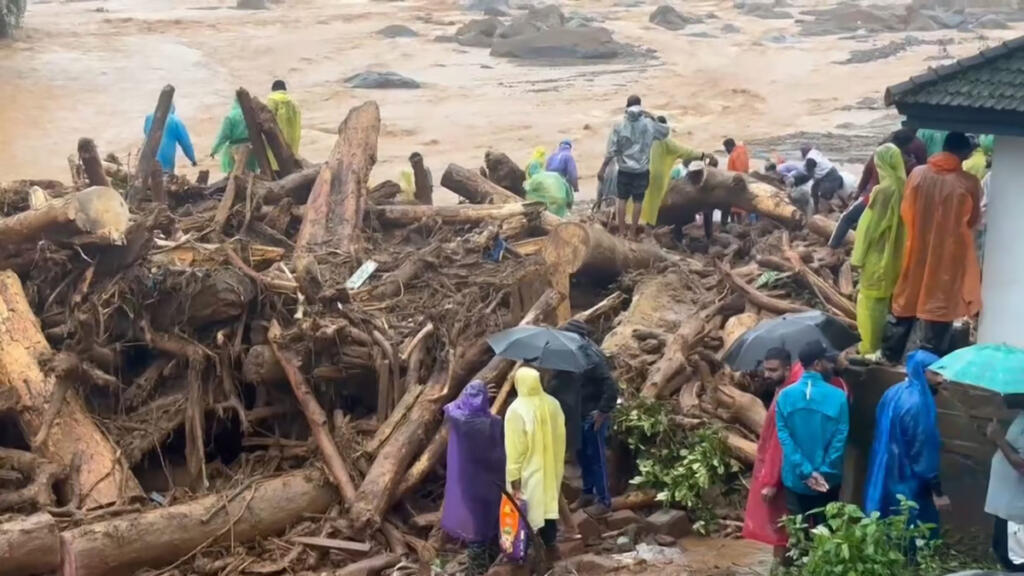Waynad, a hilly district in Kerala, recently faced a catastrophic landslide that claimed over 140 lives and injured many. This disaster, triggered by torrential rains, struck on July 30, primarily affecting areas near Meppadi. The villages of Mundakkai and Chooralmala were hit hard, with numerous bodies recovered from the nearby Chaliyar River in Malappuram.
Rescue efforts encountered significant obstacles, including the collapse of a crucial bridge to Mundakkai. Various teams, such as the Indian Army, Navy, and National Disaster Response Force (NDRF), were deployed to assist in relief operations.
Kerala’s Landslide History
Waynad’s recent tragedy is not an isolated incident. Kerala has a long-standing history of landslides, especially during monsoon seasons. Between 1961 and 2016, landslides claimed 295 lives in the state. However, since 2018, there has been a marked increase in both the frequency and severity of these events.
The years 2018 to 2022 witnessed a series of devastating landslides and floods:
1. 2018: Kerala experienced its worst flood in history, resulting in 483 fatalities.
2. 2019-2020: Over 100 lives were lost due to similar disasters.
3. 2021: Multiple landslides in Kottayam and Idukki districts led to dozens of deaths.
4. 2022: Extreme weather events claimed 32 lives in the state.
Waynad’s Vulnerability
Kerala’s geographical characteristics make it particularly susceptible to landslides. Key points include:
1. 14.5% of Kerala’s land area is considered vulnerable to such disasters.
2. 13 out of 14 districts in Kerala are prone to landslides.
3. 1,848 square kilometers (4.75% of the state) is classified as a High Landslide Hazard Zone.
4. Recent studies indicate that 13% of Kerala is extremely prone to landslides.
5. Waynad, along with Idukki, Palakkad, Malappuram, and Pathanamthitta, is categorized as highly vulnerable.
Factors Behind Waynad’s Landslide Problem
Several interconnected factors contribute to the recurring landslide issues in Waynad and other parts of Kerala:
Climate Change: Shifting rainfall patterns have led to more intense, concentrated periods of precipitation. Waynad now experiences delayed monsoons with intermittent heavy rains, increasing the risk of landslides.
Deforestation: The loss of forest cover has destabilized slopes and increased erosion in Waynad’s hilly terrain.
Unregulated Construction: Building activities in vulnerable areas of Waynad have exacerbated the risk. Many structures are not designed to withstand the changing rainfall patterns.
Topography: The Western Ghats’ steep slopes and thick soil cover make Waynad naturally prone to landslides.
Human Intervention: Activities like road construction and agriculture have disrupted natural drainage patterns in Waynad, increasing the likelihood of landslides.
Impact on Vulnerable Communities
The landslides in Waynad and other parts of Kerala disproportionately affect marginalized groups, including:
1. Women and children
2. The elderly
3. Persons with disabilities
4. Scheduled Tribes and Scheduled Castes
5. Fisherfolk communities
These groups often lack the resources to recover from such disasters, making them particularly vulnerable to the long-term impacts of landslides in Waynad.
Waynad’s Unique Challenges
Waynad faces several unique challenges that contribute to its landslide vulnerability:
1. Geographical Location: Situated in the Western Ghats, Waynad’s hilly terrain makes it naturally susceptible to landslides.
2. Soil Composition: Waynad’s soil is characterized by a thick overburden that becomes unstable when saturated with rainwater.
3. Drainage Issues: Human activities in Waynad have blocked natural drainage channels, leading to increased water concentration during heavy rains.
4. Development Pressure: The growing demand for land in Waynad has led to construction in high-risk areas.
5. Limited Awareness: Many residents of Waynad may not fully understand the risks associated with living in landslide-prone areas.
The Way Forward for Waynad
To address the recurring landslide issues in Waynad, several steps can be taken:
1. Improved Land-use Planning: Implement stricter regulations on construction in high-risk areas of Waynad.
2. Enhanced Early Warning Systems: Develop and deploy more effective early warning systems specific to Waynad’s terrain.
3. Community Education: Increase awareness among Waynad residents about landslide risks and preparedness.
4. Eco-friendly Development: Promote sustainable development practices that minimize disturbance to Waynad’s natural landscape.
5. Reforestation Efforts: Initiate large-scale reforestation programs to stabilize slopes in Waynad.
Conclusion: Waynad’s Path to Resilience
The recurring landslides in Waynad highlight the urgent need for comprehensive disaster management strategies. As climate change continues to exacerbate these issues, it is crucial for local and state authorities to implement sustainable development practices, improve early warning systems, and prioritize the protection of vulnerable communities.
